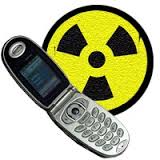The changes in banking between 1970 and 2007, and especially the major
innovations and growth in banking between 2000 and 2007, have one
outstanding feature. Banks have developed powerful instruments for credit
risk transfer. Credit risk is another name for default risk and credit risk
transfer is its transfer by one bank to another bank, bank-like entity or other
investors, for a price.
As a result of these innovations, banks’ business model was transformed.
Old-fashioned banking, which, in simplified form, we have represented as
‘basic retail banking’ used asset management that could be described as
‘originate and hold’. That means the bank originates a loan, with careful
regard to the quality of the borrower and the security provided against the
loan, and would hold it until its maturity. By that means, the bank holds and
manages the risks on its assets.
The new business model resulting from innovations in credit risk transfer is
widely known as ‘originate and distribute’. The bank originates a loan and,
instead of bearing the risk attached to it, sells the risk to a range of investors
willing to bear the risk for a price. To the extent that a bank fits that model
its income comes from fees the bank charges for arranging loans, creating credit default swaps and other instruments, creating and operating Special
Purpose Vehicles and a wide range of other fee-generating activities.
Click here for government certification in Accounting, Banking & Finance





9 Comments. Leave new
Short and precious…! Good..!
Good one !
Nice article
This is indeed the Chief Business of banks.
Crisp and effective.. good work!!
well written article.
wow…too good…
Very Well Codified 😀
good one…